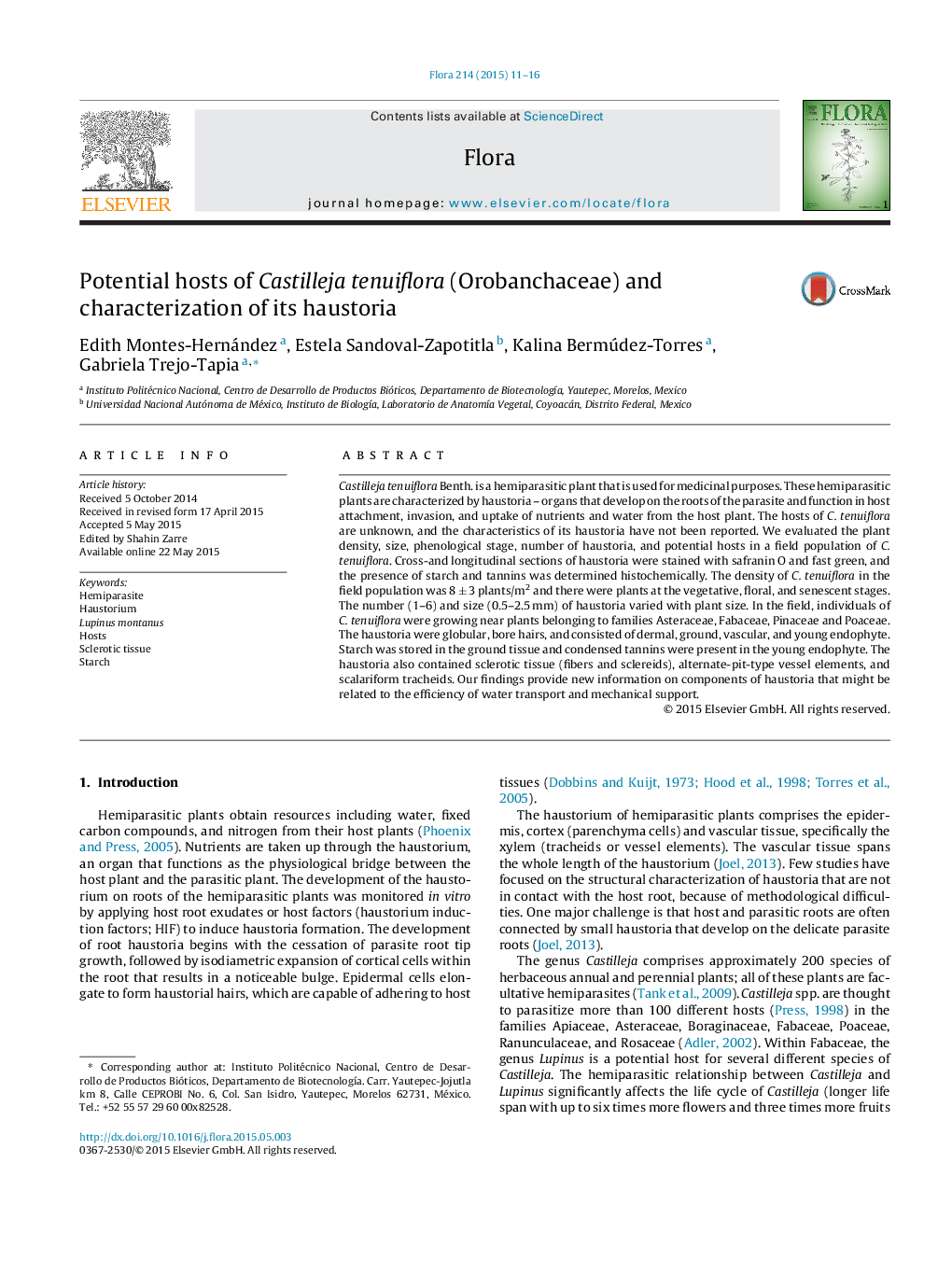| Article ID | Journal | Published Year | Pages | File Type |
|---|---|---|---|---|
| 2179367 | Flora - Morphology, Distribution, Functional Ecology of Plants | 2015 | 6 Pages |
•Castilleja tenuiflora is a hemiparasitic plant.•C. tenuiflora hosts are Lupinus montanus, Baccharis conferta, Abies religiosa, Bidens triplinervia, Trisetum spicatum.•The haustorium presents three important tissues: dermal, fundamental and vascular.•Presence of fibers and sclereids in the fundamental tissue of the haustorium.•Haustorium vascular tissue comprises exclusively xylem: vessel elements and tracheids.•Roots present xylem vessel elements (alternate pits), tracheids (reticular) and phloem.•The phloem of roots of Castilleja tenuiflora present sieve tubes and thin cellulosic walls.
Castilleja tenuiflora Benth. is a hemiparasitic plant that is used for medicinal purposes. These hemiparasitic plants are characterized by haustoria – organs that develop on the roots of the parasite and function in host attachment, invasion, and uptake of nutrients and water from the host plant. The hosts of C. tenuiflora are unknown, and the characteristics of its haustoria have not been reported. We evaluated the plant density, size, phenological stage, number of haustoria, and potential hosts in a field population of C. tenuiflora. Cross-and longitudinal sections of haustoria were stained with safranin O and fast green, and the presence of starch and tannins was determined histochemically. The density of C. tenuiflora in the field population was 8 ± 3 plants/m2 and there were plants at the vegetative, floral, and senescent stages. The number (1–6) and size (0.5–2.5 mm) of haustoria varied with plant size. In the field, individuals of C. tenuiflora were growing near plants belonging to families Asteraceae, Fabaceae, Pinaceae and Poaceae. The haustoria were globular, bore hairs, and consisted of dermal, ground, vascular, and young endophyte. Starch was stored in the ground tissue and condensed tannins were present in the young endophyte. The haustoria also contained sclerotic tissue (fibers and sclereids), alternate-pit-type vessel elements, and scalariform tracheids. Our findings provide new information on components of haustoria that might be related to the efficiency of water transport and mechanical support.
Graphical abstractFigure optionsDownload full-size imageDownload as PowerPoint slide
